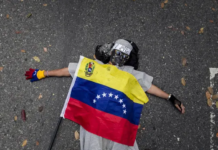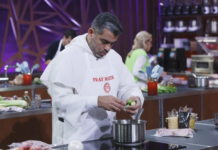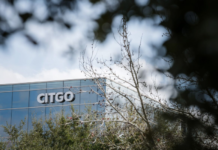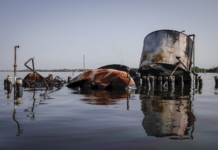[ad_1]
* Deal hinges on negotiations with Iraq, Iran
* Nigeria, Qatar, Venezuela declines may help
* But Angola, Libya gains add to challenge
* Saudi Arabia refuses to cut alone
As OPEC enters the stretch run in its effort to finalize its much-hyped production freeze, the math it is facing is daunting.
Since OPEC announced its preliminary freeze in Algiers in late September, the producer group’s output has risen about 240,000 b/d to reach an average of 33.64 million b/d in October, according to its own estimate.
That means OPEC will have to cut at least 640,000 b/d and as much as 1.14 million b/d to fit under the deal’s cap of 32.5 million to 33 million b/d.
Article Continues below…
The cut needed likely will be even higher, as Angola’s October output was temporarily depressed by maintenance at its Dalia field. The field is expected to return online this month, adding another 200,000 b/d or so to the country’s — and OPEC’s — total.
That also doesn’t include potential growth from Libya and Nigeria, who are exempt from the freeze as they recover from internal strife that has knocked a lot of their output offline. Any rises in either country’s production will have to be offset by cuts elsewhere.
OPEC is holding a flurry of meetings to hash out the details ahead of its November 30 deadline to finalize any pact. A closer examination of each country’s production and ability or willingness to cut shows that attaining a credible freeze deal may well be unlikely — but not necessarily impossible.
EXEMPTION COMPLICATIONS
Iraq and Iran have so far proved to be major sticking points toward finalizing the freeze.
Iran is being given some «special consideration» in the freeze deal, according to sources, but remains in a dispute with Saudi Arabia and others over how much leeway it will be given.
Iran has repeatedly said it will only agree to output restraints when it reaches its pre-sanctions level of some 4 million b/d. The country reported to OPEC last week that it produced 3.92 million b/d in October, though OPEC’s secondary sources pegged its output lower at 3.69 million b/d.
Experts say that Iran’s output has likely neared its peak without substantial further investment, which could give it an opening to agree to a freeze, but for domestic political concerns, with a presidential election scheduled for this spring and the prospect of US President-elect Donald Trump undoing the nuclear deal that relieved sanctions on Iran’s oil sector.
Iraq, meanwhile, has said it is entitled to an exemption due to its war with the Islamic State. It said it produced 4.78 million b/d in October, much higher than the secondary sources’ estimate of 4.56 million b/d.
Sources have indicated that Iraq has dug in its heels over its insistence on using its self-reported production figures, rather than secondary sources, which Saudi Arabia finds unacceptable.
Saudi Arabia, which is expected to bear the brunt of any OPEC cuts, has declared that Iraq will not be given any exemption, as it says any burdens of the cut must be shared equitably among the group.
If Iraq and Iran could be persuaded to freeze their production at current levels, that would go a long way toward allowing OPEC to reach its freeze target. But so far, no signs of any such detente are evident.
GAINS AND LOSSES
Nigeria may provide the biggest initial cut contribution toward the freeze, albeit unwillingly.
The West African country, which resumed loadings of key export grades Qua Iboe and Forcados in late September, saw its production rise 170,000 b/d to 1.63 million b/d in October.
But those gains will likely be reversed this month, as renewed attacks on its oil infrastructure have shut in Forcados production this week, according to market sources. Forcados output has ranged between 150,000 and 200,000 b/d.
In addition, Nigeria’s Agbami field is scheduled for maintenance in the first half December, potentially taking another 120,000 b/d off the market.
Together, those outages could get OPEC about 300,000 b/d toward its cut goal, but those shut-ins are likely temporary.
Libyan production, meanwhile, has risen steadily in the last two months as exports from some of its eastern ports have resumed.
Mustafa Sanalla, chairman of Libya’s state-owned NOC, told S&P Global Platts earlier this month that Libyan production was now 585,000 b/d, up from OPEC’s October estimate of 528,000 b/d.
NOC has set an output goal of 900,000 b/d by the end of 2016, though experts doubt that Libya will be able to produce much beyond 700,000 b/d without significant investment and political capital to negotiate reopening of fields held by militias.
Venezuela has seen steady declines in its oil production as it suffers through an economic crisis, with OPEC pegging its October output at 2.07 million b/d. The country has been one of the most strident within OPEC in urging a production cut to prop up oil prices.
Experts say Venezuela could agree to cut, which would not take additional measures beyond allowing its fields to continue their operational declines.
Qatar could also contribute slightly to a cut, with scheduled maintenance at its Al-Shaheen field causing January cargo loadings to drop to 10 from 14 in December. That would amount to an 80,000 b/d drop in Qatar’s output.
GULF CUTS ON THE TABLE
If Iran and Iraq are willing to freeze at current levels and assuming the expert consensus of 700,000 b/d for Libya holds, plus the declines in Nigeria, Venezuela and Qatar, offset by the return of Dalia production in Angola, that would leave OPEC with approximately 550,000 b/d to cut to reach 33 million b/d and 1.05 million b/d to reach 32.5 million b/d.
Experts do not expect Gabon, Ecuador and Indonesia to contribute meaningfully, if at all, to any cut.
Algeria also may not cut, though as host of the meeting where the preliminary freeze was announced, it could agree to a nominal drop as a show of good faith. Algerian minister Nourredine Bouterfa is acting as a go-between in negotiations involving Saudi Arabia and Iran, according to sources.
That leaves the rest of OPEC’s Gulf contingent — Saudi Arabia, Kuwait and the UAE — to make up the difference.
According to sources familiar with negotiations, the Gulf countries have previously offered to cut their production by 4% under the freeze proposal.
For Saudi Arabia, that would mean cutting from 10.5 million b/d in October to about 10.1 million b/d, according to OPEC’s latest estimate. But Saudi Arabia reported to OPEC that its October production was significantly higher at 10.625 million b/d.
Sources have said that Saudi Arabia is not willing to drop under 10 million b/d, which limits how much it would contribute to a freeze deal.
Kuwait and UAE would likely go along with any Saudi cut, according to experts, though they have not offered any firm numbers.
Both countries have outlined ambitious plans to increase their production capacity, which would have to be scaled back if any freeze deal is finalized.
If Saudi Arabia, the UAE and Kuwait were to commit to the rumored 4% cut proposal and Iraq and Iran manage to agree to freeze, that could put OPEC within its freeze range, though further cuts would be needed if Nigeria were to recover from its setbacks.
WATCHING NEGOTIATIONS
The difficult math and — for now — the strong resistance from Iraq and Iran to freezing production, along with Saudi insistence that it will not cut alone, have many OPEC experts anticipating that the organization may not finalize any individual country allocations at the November 30 Vienna meeting.
Rather, OPEC may merely announce a collective production ceiling of between 32.5 million to 33 million b/d, which would leave market watchers skeptical, given the lack of enforcement mechanisms to prevent cheating.
OPEC regularly exceeded its 30 million b/d ceiling that it imposed beginning in 2012 — before Gabon and Indonesia joined — until the organization scrapped it last year.
Other countries who have committed to joining OPEC in its freeze are waiting for the group to get its house in order.
«The output levels of individual countries are an internal OPEC issue,» Russian energy minister Alexander Novak said Friday after emerging from a meeting with Saudi and Algerian counterparts in Doha.
–Herman Wang, herman.wang@spglobal.com
–Edited by Jason Lindquist, jason.lindquist@spglobal.com
[ad_2]
Fuente








